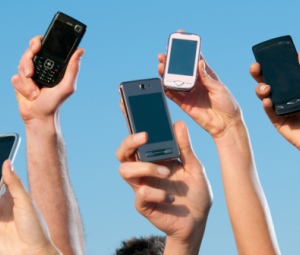Environmental need to make devices repairable


Some months back, my old and inexpensive Samsung handset suddenly stopped charging. It was a rather basic smartphone that had served me nearly 15 months. I rejoiced. I finally had a reason to buy a new smartphone.
That same evening, I bought the Samsung Galaxy S3. I chose the maroon option with a matching case. After making the payment, I asked the shopowner if he would buy back my old phone. He said yes and offered 2,000 rupees (US$37) for it.
I didn't tell the salesperson the old handset was faulty. I thought he'd figure it out and return it to me. Or, he might lower its resale price to 500 rupees (US$9.2). But he didn't do either of that. He repaired the phone within a few seconds and gave me 2,000 rupees in return.
It takes approximately 165 pounds of raw materials to manufacture a cellphone, and over 8 gallons of water to produce one microchip.
It was, of course, too late to return the S3 (and keep the old newly-repaired one) and I did want a new phone. But it made me realize that we give up old handsets at the drop of a hat, and most people don't even wait for a fault in their handsets to buy a new one. And manufacturers love them for doing so.
According to IDC's global mobile phone tracker report, vendors will ship more than 1.7 billion mobile phones in 2013, and this number is forecasted to grow 1.4 percent year-over-year.
There is a considerable environmental impact to manufacturing this volume of cellphones when you consider that it takes approximately 165 pounds of raw materials to manufacture a cellphone, and over 8 gallons of water to produce one microchip.
A media statement issued Monday by experts from the IEEE identified repairs as an important environment-friendly "R-world", especially in consumer electronics, alongside the other "Rs" like "reduce", "reuse", and "recycle"--considered the foundation of sustainable living.
Unlike most developed countries, mobile repair is a flourishing business in India. I see small outlets repairing old handsets for a fraction of the cost that the service station of a handset manufacturer may charge. In a diverse country like India, there is always a market for second-hand goods, ranging from appliances to mobile phones, cars, and even old clothes.
There is a lot that manufacturers need to do in order to improve the repairability of its products. "Through modest design changes, cellphone manufacturers can improve the repairability of its products and streamline the upstream manufacturing process, thereby, minimizing environmental impact while also improving global commerce and social development," the IEEE statement said.
In a country like India, improving the repairability of mobile handsets would go a long way in increasing the penetration of high-end mobile phones, especially smartphones.
Make cellphones more repairable
While innovations are made to improve the sustainability of this process, cellphone manufacturers can garner more immediate environment-friendly benefits by making their products more repairable.
A 2003 paper from the IEEE International Symposium on Electronics and the Environment, titled "Life cycle assessment of the mobile communication system UMTS: Toward eco-efficient systems", indicates that extending the service life of the phone from one to four years decreases the environmental impact by about 40 percent.
"Cellphone companies manufacture a wide range of devices to meet the technological and budget requirements from early adopters to first-time cellphone owners in leading world markets and developing nations across the globe," Stu Lipoff, IEEE fellow and president of IP Action, said in the media statement.
According to IEEE, upstream cellphone manufacturing can be reduced by employing designs that enable easier and more economic device repairability, "so refurbished phones from the first market can have an extended life through use in secondary and tertiary markets".
This process would not only help reduce the environmental impact from the manufacturing process, but also provide more advanced technology for developing nations, helping to stimulate global commerce and improve the quality of life around the globe.
Advancements in technology are enabling manufacturers to make devices smaller and sleeker. However, along with this trend, they are also employing more closed designs and using materials that are making devices nearly unfixable.
"Regardless of size, there are numerous design features that manufacturers can use to improve the repairability of their products," said Kyle Wiens, IEEE member and CEO of iFixit. "Simple things like utilizing openable cases, using screws rather than adhesives, and providing easy access to parts that are most likely to break, like screens, greatly improve the repairability of cellphones and significantly extend their life."
It is imperative for designers to incorporate sustainable features into their products not only to make them last longer, but to help promote a more sustainable and environmentally friendly future.